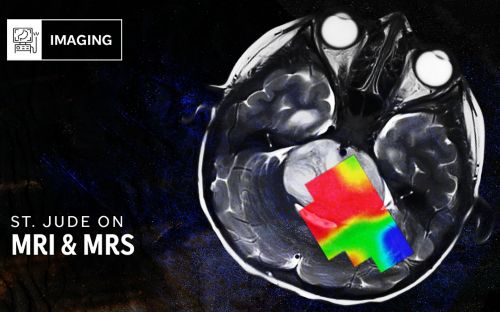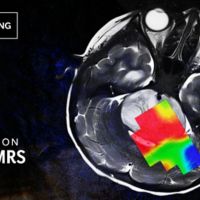Condensates: It’s not just a “phase”

Biophysical processes create condensates, which cells use to sort and separate proteins within cells without a membrane.
How something is organized can have a tremendous impact on its function. This is true for something as large as a country or as simple as the words we speak. For example, does BLJUMED TETRSE mean anything to you? It’s just a bunch of jumbled letters. But when they’re in the correct order, the 26 letters of the English alphabet can be used to create a range of meaningful words. Cells function the same way by organizing biomolecules like proteins and DNA, using principles of chemistry and physics to compartmentalize them in the right location at the right time. This transforms the jumbled mix of biomolecules in the cell into an organized and functional system that can be understood and translated throughout the body through its function.
Book club members come together at a specific location to discuss a book and share what they have learned, and then they disperse when the meeting concludes. Similarly, our cells use a phenomenon called phase separation to bring together specific proteins exactly where and when they are needed. This enables cells to make temporary subcellular compartments. These compartments, called condensates, typically lack surrounding membranes, enabling them to form and dissolve as needed. This also allows them to concentrate specific proteins and nucleic acids for a particular function while excluding others. The resulting “droplets” are often referred to as the dense phase, with everything outside of the droplet known as the dilute phase, where the biomolecules are less concentrated.
Understanding the grammar of phase separation
Evaluating how different protein sequences and conformations (shapes) can contribute to phase separation is a long-term research endeavor of Tanja Mittag, PhD, St. Jude Department of Structural Biology. Mittag’s research dives into the principles of how the properties of amino acids in protein chains influence condensate formation. This knowledge is vital to visualizing the big-picture role of condensates in cells.
“We work hard to understand how amino acid sequence drives phase separation,” Mittag said. “Once we do, we can rationally change the sequence to alter this behavior and characterize the effect on function.” This effort is reflected in a recent Nature Chemistry publication, where Mittag looked at how the sequence of an intrinsically disordered region, a section of protein without any defined structure, contributed to its ability to form condensates.
Finding the meaningful sentences: Functions of biomolecular condensates
Millions of combinations of words can be made using the letters of the alphabet, but only by assembling words in the appropriate order can we create sensible sentences. Early work in the 1960s demonstrated nucleoli (tiny protein assembly hubs within the nucleus) were “open” assemblies that lacked a membrane. Many more condensates were subsequently unearthed, such as stress granules formed when the cells were under stress, such as an infection or UV radiation. These condensates contain thousands of highly dynamic biomolecules concentrated together to protect them from stress. As soon as the stress is relieved, the condensates dissolve.
Condensates have been at the forefront of explaining subcellular organization and balance in a hitherto unexplored way. In recent decades, a plethora of proteins have been shown to form the tiny droplets. What’s been more revolutionizing is that condensates have been associated with widely studied cellular processes such as transcription, translation, cell fate determination and cell signaling. By organizing biomolecules spatially in the locations where they function as well as temporally for the timespans that they are needed, condensate formation allows reactions to proceed at greatly increased rates, simply because there are more reactants in a small space.
But what happens when the balance goes awry?
Condensate formation is essential for homeostasis, providing cells with spatiotemporal control over protein function. The balance and states of proteins within the condensates must be highly regulated. Aberrant or perturbed condensed protein states can lead to neurodegenerative diseases and cancer.
Disease-associated condensates can have compositions or properties that deviate from functionally normal ones. Proteins can lose their dynamic nature and misfold, acting as an ignition key to trigger disease. Such events of aberrant phase separation have been cataloged in amyotrophic lateral sclerosis (ALS) and frontotemporal lobar degeneration (FTLD). J. Paul Taylor, PhD, St. Jude Scientific director, and his lab focus on understanding the protein-RNA interaction network that drives phase separation in stress granules. They explore how disturbing condensates can play a role in the persistence of stress granules, contributing to ALS. In an approach from the biophysical perspective, Mittag studies how mutations in stress granule-linked proteins can drive the formation of aberrant protein condensates. This research also focuses on understanding how condensates behave and what happens to them over time.
Many of the cellular processes dysregulated in cancer have recently been shown to occur in biomolecular condensates, suggesting that condensates can play a critical role in the formation of tumors. Richard Kriwacki, PhD, St. Jude Department of Structural Biology, and Charles Mullighan, MBBS, PhD, St. Jude Department of Pathology, demonstrated in Cancer Discovery that NUP98, a family of proteins that controls what goes in and out of the nucleus, can drive leukemia by forming malfunctioning condensates. The Kriwacki lab also studies abnormal protein fusions (called fusion oncoproteins) which aberrantly phase separate, and are recurrently observed in various pediatric and adult cancers. This helps elucidate interactions involved in condensates that may lead to oncogenesis.
The way forward
Biomolecular condensates are dramatically changing our interpretation of classical cellular processes, like chromatin organization, transcription and stress response. While the fundamental interactions governing phase separation are beginning to be teased out, the specific role played by phase separation in these processes is still in question.
Considering the complexity of cellular processes, the myriad number of proteins involved and the dynamic nature of these condensates, the field of condensate research continues to be a source of insight, intrigue and often surprise. Broadening our knowledge about the physiological and disease-related biomolecular condensates is a step closer to designing therapies against many diseases previously considered untreatable, such as ALS.
“We realize now that cells are chock-full of condensates and that many proteins deemed “undruggable” are part of condensates. This provides new opportunities to target these processes therapeutically because now we can go after the condensates themselves and after proteins that regulate their formation and dissolution,” Mittag said.
Researchers of diverse disciplines, from polymer science, biophysics, biochemistry, cell biology and medicine, are collaborating to explore this multifarious and dynamic phenomenon of condensate formation. It is increasingly clear that condensate formation is a fundamental biological process and is most definitely not just a phase.






